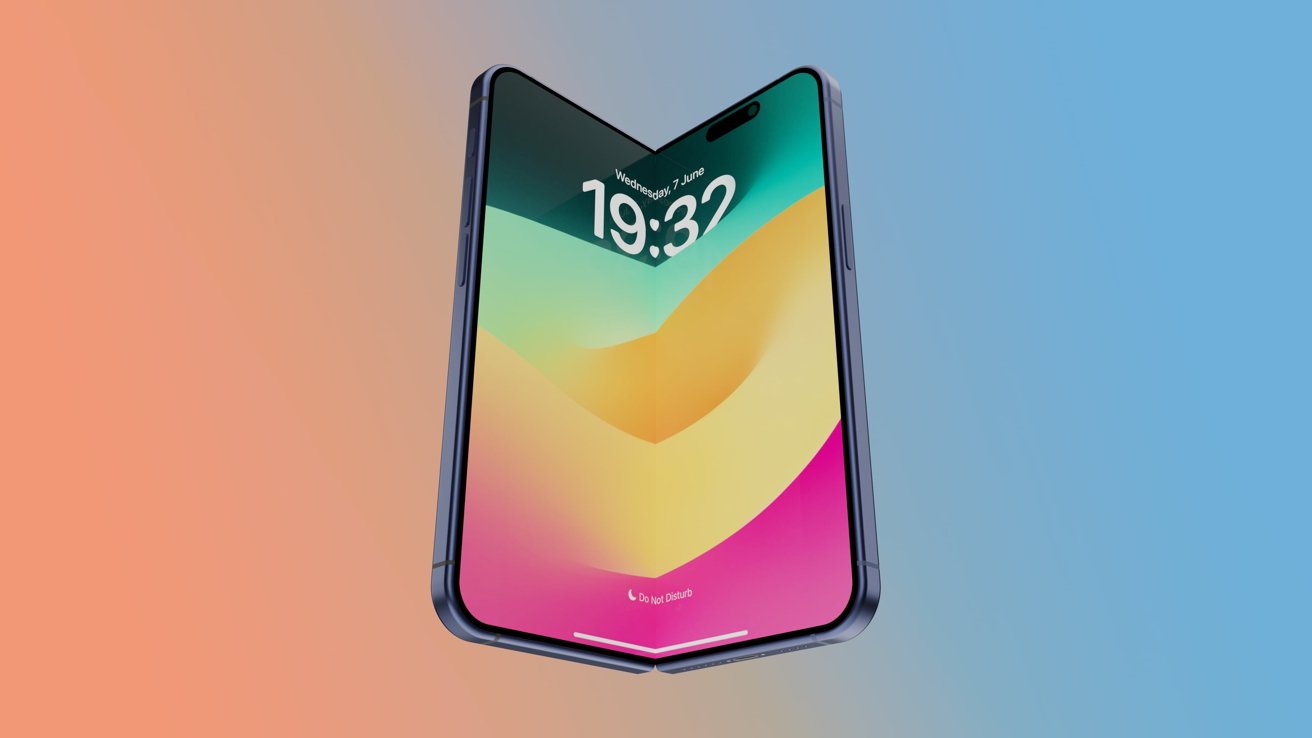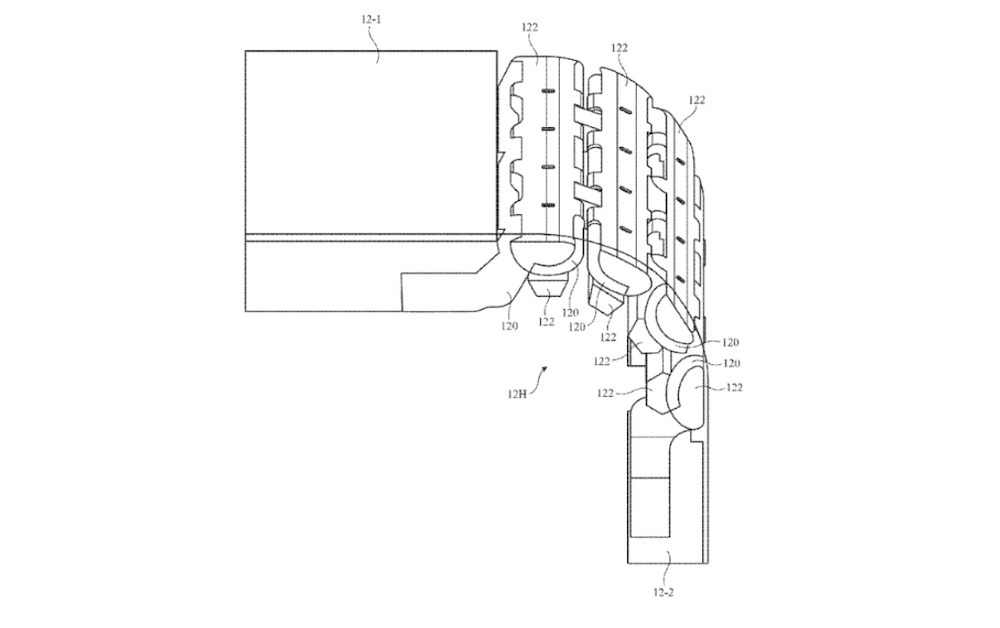Apple is continuing to develop non-traditional display technology that can fold out and expand along hinge articulation points, likely for a future foldable iPhone.
Even though Apple has not released a folding iPhone, it continues to file patent applications on the topic — and, as with this latest one, to get those patents granted. Some of the now wide-ranging patents detail scroll-like or slidable displays that expand.
The newly granted patent is called "Electronic devices having folding expandable displays." In it, Apple continues its foldables research with much more detail about potential hinge structures.
An early illustration in the patent, which was first filed back in February 2020, details a foldable device bent at a right angle. Notably, the figure shows a new multi-link hinge structure with more than just one articulation joint.
This is only one such potential hinge that Apple is researching. The patent text indicates that hinge structures could include "gear teeth, belts, and/or other movement synchronization structures" and may also sport "members that move relative to each other during bending."
Those moving members may compromise bars and links with opposing curved bearing surfaces, including stop surfaces that "prevent excessive rotation of the bars and links with respect to each other." These links could rotate around a pivot point that lies within a display without the actual hinge structure "living within the thickness of the display."
The patent also calls back to other expandable or slide-out displays, noting that a device with "housing structures that support folding motions, sliding motions, scrolling motions, and/or other behavior" could provide more screen real estate for users in a compact size.
Additionally, the patent runs through some ways that a hinge structure could prevent undue display stress during folding and unfolding, including specific hinge types, stress minimization components, stop surfaces, and friction to control the amount of force applied to the hinge.
Folding screens for many devices
Apple doesn't restrict the display technology to the iPhone, though. It notes in the patent that the foldable or expandable device could be applied to a slew of different device types, including wristbands, pedants, laptops, glasses, goggles, embedded kiosk systems, or devices within vehicles. The depiction of the device as a smartphone is just an example, the patent adds.
A good portion of the patent details the kinds of materials such a device could be crafted from; the kind of electronic circuitry that would power it; and the types of sensors, buttons, and other components.
The patent lists Owen D. Hale; Tatsuya Sano; Chang-Chia Huang; Yasmin F. Afsar; Hoon Sik Kim; and Michael B. Wittenberg. Of them, Kim has worked on different expandable display technologies for Apple, while Wittenberg was named in an Apple Watch band patent and a force-sensitive Touch ID patent.
Apple files numerous patents on a weekly basis, so they are not a reliable indicator of the company's imminent plans. More than that, they don't provide any timeline for when such technology could reach the market.
 Mike Peterson
Mike Peterson


-m.jpg)






 Marko Zivkovic
Marko Zivkovic
 Mike Wuerthele
Mike Wuerthele
 Christine McKee
Christine McKee
 Amber Neely
Amber Neely
 Wesley Hilliard
Wesley Hilliard

 William Gallagher
William Gallagher










11 Comments
Hard pass. This gimmick will die like 3-D TVs and Smell-O-Vision did.
I've seen a couple of 'scrolling' displays and they look very good. Hopefully they will get past the concept stage and we'll be able to see how they stack up against the current folding phones.
Personally, I think the idea is here to stay. We just need for prices to come down
Point Taken!!!